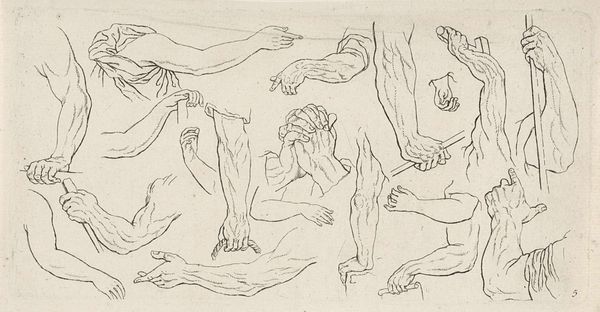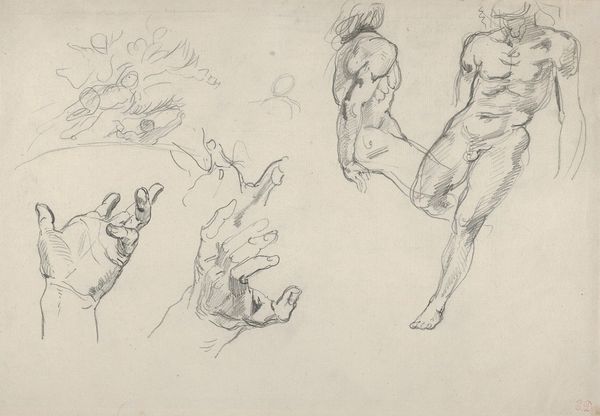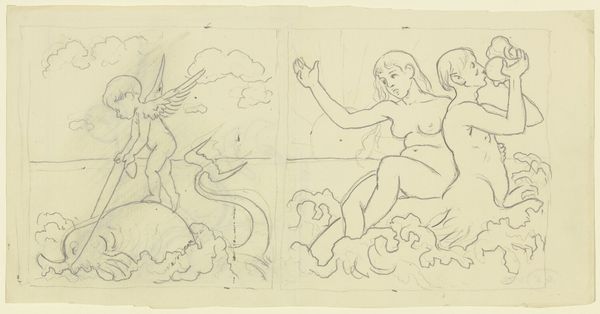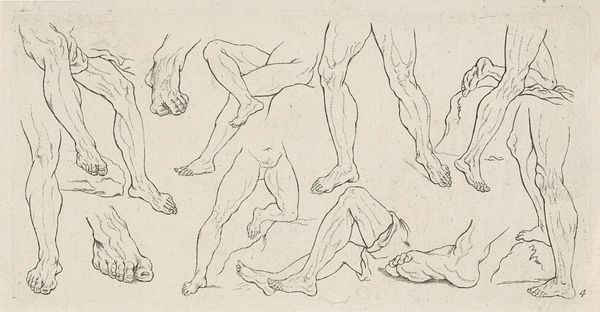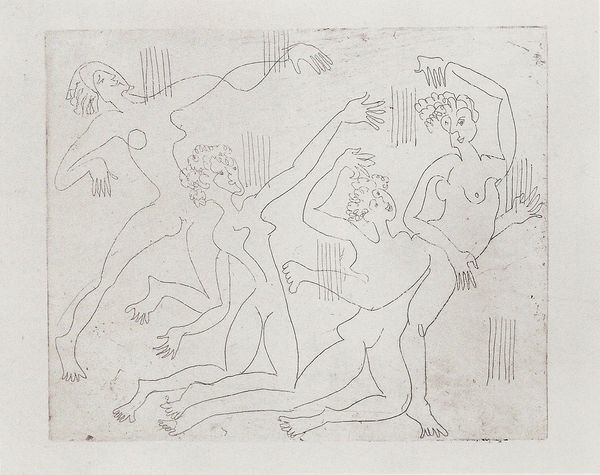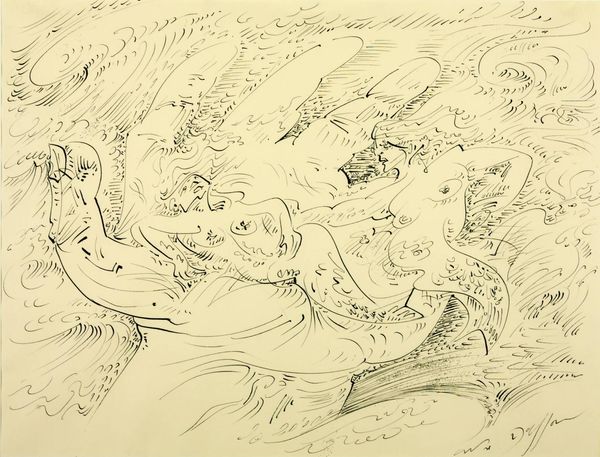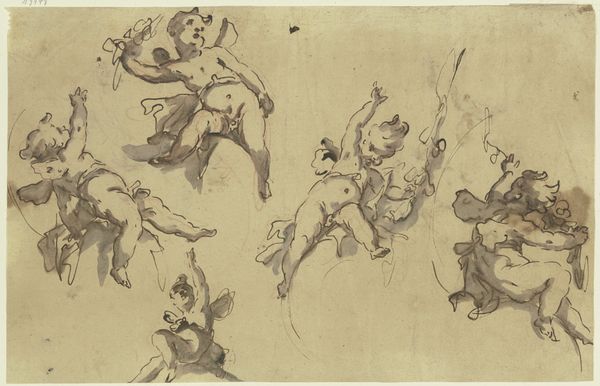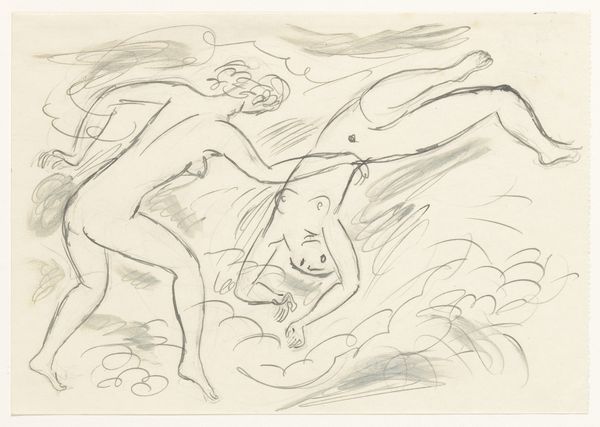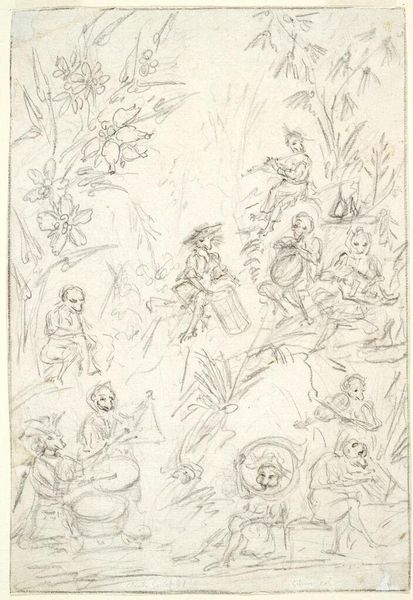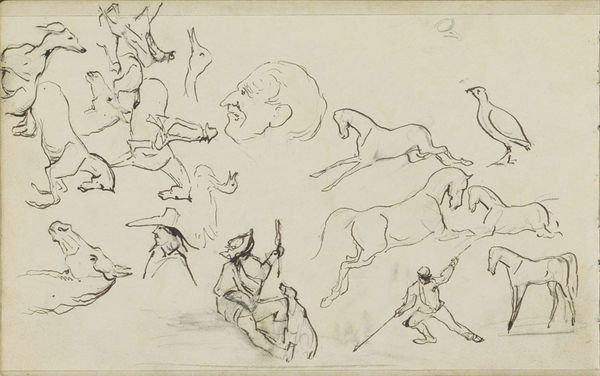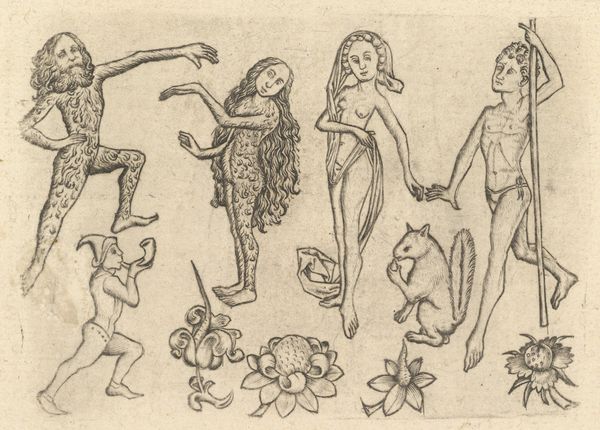
drawing, ink, pen
#
drawing
#
comic strip sketch
#
allegory
#
baroque
#
figuration
#
personal sketchbook
#
ink
#
idea generation sketch
#
sketchwork
#
ink drawing experimentation
#
pen-ink sketch
#
sketchbook drawing
#
pen
#
storyboard and sketchbook work
#
nude
#
sketchbook art
#
initial sketch
Dimensions: height 96 mm, width 190 mm
Copyright: Rijks Museum: Open Domain
Curator: This ink drawing, attributed to Leonard Schenk and created sometime between 1710 and 1767, is titled "Studies van putti, nimfen en stroomgoden." It's part of the Rijksmuseum's collection. It feels wonderfully chaotic, doesn't it? All these figures tumbling about the page. Editor: It certainly does. A whirlwind of classical allusions! The loose lines give it a sense of movement, almost like catching a glimpse into a dream. It seems preliminary, like notes taken for a larger composition, a stage design, perhaps? Curator: Precisely. We are likely seeing an allegorical study here, steeped in Baroque sensibilities. Sketches like this functioned as visual notebooks of a kind, a record of the visual and intellectual resources available for deployment by artists during this era. Editor: And those figures! The putti with their baskets of flowers suggest abundance, celebration... perhaps love? And the river gods, languidly reclining, represent the life-giving force of water. These are archetypal figures that resonate deeply in Western art. They're not merely decorative; they're carriers of cultural meaning. Curator: Indeed, and we see echoes of those figures reappearing across various commissions for decades afterward, particularly across different countries and courts that adopted French artistic theories of the era. The study's very accessibility likely also increased their reproduction in other formats for other artists and buyers. Editor: There's something inherently timeless in their depiction as well. They’re rendered in a way that evokes emotion rather than specific detail, which means their emotional relevance translates over the generations, which in turn impacts on their meaning and usage. Curator: Ultimately, such loose sheets provided more fluid ideas about political and religious representation, which then provided new ways of seeing things that ultimately helped solidify socio-political status. Editor: Absolutely. And it really underscores the value of understanding the symbolic vocabulary of art to connect with our own cultural past. Curator: Exactly. I'm left considering what impact artworks like this, that were very widely disseminated at the time, ultimately have on how we, even now, visualize some of these characters and themes. Editor: Yes. The persistent visual memory these images created shapes how we perceive, interpret, and even dream today.
Comments
No comments
Be the first to comment and join the conversation on the ultimate creative platform.
